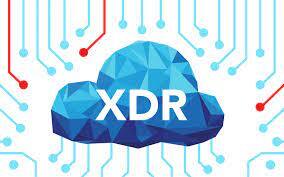Selenium Frameworks – Selenium Frameworks Types
Introduction:
Selenium is an automated testing tool that we use to test web applications. It eliminates the need for manual testing and automates repetitive tasks. With Selenium testing, we can analyze the consistency of web applications in multiple browsers. The great thing about Selenium is that you can integrate Selenium with other tools and frameworks.
Selenium framework is a group of testing tools with which we can test applications running on multiple browsers like Google Chrome, Mozilla Firebox, Safari, Microsoft Edge, etc. This framework supports various programming languages like Java, Python, Ruby, Perl, PHP, etc. You can write test scripts in multiple programming languages and run the scripts in any web browser.
Selenium framework has many components like Selenium IDE and Selenium grid. It leverages a code structure that simplifies code maintenance. This framework also increases code reusability and code readability. You can make quick and reliable Selenium testing with the Selenium framework. On top of all that, this framework minimizes code maintenance costs and time drastically.
In this blog, we will jump into different selenium framework types, key features, and pros and cons.
Let’s dive in!
Table of contents:
- Different types of frameworks in Selenium
- Keyword-driven framework in Selenium
- Modular testing framework
- Hybrid framework in Selenium
- Data-driven framework in Selenium
- Linear Scripting framework
- Conclusion
Different types of frameworks in Selenium
We can use many Selenium framework types for testing web applications based on the testing scenarios and requirements.
Let’s explore the key features and uses of different Selenium framework types in the following.
Interested in a Software Automation Testing Course? Register now for Selenium Training offered by ‘Mindmajix – A Global training platform’.
Keyword-driven framework in Selenium
A keyword-driven framework is also known as table-driven testing. The name is given because keywords are stored in tabular format in Excel sheets. This framework is used when the application code has multiple functionalities or methods. Keywords can be written for each functionality and stored in tables. The keywords are called by application codes whenever they are needed.

This framework eliminates the repetitive writing of test scripts, reducing the complexity of codes. This framework allows testers to maintain keywords in separate Java files based on functionalities. So they can control the functionalities independently. The critical aspect of this framework is that it speeds up the selenium testing process.
Advantages:
- You can use the same test scripts for multiple use cases. Simply put, we can reuse scripts.
- Test scripts are usually independent.
Disadvantages:
- It takes longer design time to perform selenium testing
- It demands robust automation skills from testers.
Modular testing framework
The modular testing framework differs from the typical end-to-end testing approach. The main thing about this framework is that you can split application code into small and independent modules. You can write separate test scripts for each module and run the modules individually.

Once you complete the testing of all application modules, you can combine them to get unified results. If you want to perform integration testing for the application, you must prepare a master driver script to achieve the same. Note that data sets are usually embedded in test scripts in this testing framework.
Advantages:
- It offers high scalability
- It is a flexible and easy-to-maintain framework
- We can reuse module test scripts
- Modules are independent and don’t rely on each other
- Test maintenance cost is low.
Disadvantages:
- The testing process consumes more time
- You need to write separate test scripts for different data sets. It is a tedious process.
- Testers should have strong coding skills to work with this framework.
- Testing complexity is high since datasets are embedded in test scripts.
Hybrid framework in Selenium
The hybrid framework is nothing but a combination of data-driven and keyword-driven frameworks. The main aspect of this framework is that it simplifies coding efforts for testers significantly. This framework has many components, such as a Function library, excel sheets, design templates, object repository, and test scripts.

This framework allows the use of different keywords and data sets. The key advantage of this framework is that you can use the same code for different data sets. You can use Excel sheets to store test scripts and test data. At the same time, you can use a Java class file to store keywords.
Advantages:
- This framework works better since it delivers the combined effect of two frameworks
- It provides higher flexibility and allows reusing test scripts
Disadvantages:
- Integrating two frameworks creates some level of complexity
- Testers need to have a perfect understanding of frameworks and strong coding skills
- Execution speed is typically low in this framework
Data-driven framework in Selenium
A data-driven framework allows different datasets to test a single application code. The data sets are normally separated from the code and are stored in external files such as Excel sheets, .csv, and .xml files. They are imported into the selenium testing tool only when they are needed. You can use the POI library to read and write excel sheets.

The main thing about this framework is that you can conduct a single test for different datasets. Also, you can modify test scripts at any time without affecting application code and datasets since test scripts and data sets are kept in separate locations. That’s why this framework reduces testing time drastically.
Advantages:
- It supports multiple datasets
- Application modules are independent
Disadvantages:
- Testers should have strong coding skills to work in this framework
- Setting up the framework and preparing different datasets consumes a long time.
Linear Scripting framework
Linear scripting framework is a basic-level testing framework. It is also called the ‘record and playback’ framework. In other words, you can play back the selenium testing process once it is over. It helps to know how the testing process was performed step by step.
This framework linearly executes test scripts. We can use this framework to test small-sized applications. You need to create test cases for the applications and execute them separately. This framework records every step of the selenium testing process, such as browsing, user inputs, navigation, etc.
Advantages:
- It is a fast and simple framework
- Less time is taken to create test cases
- Basic level programming knowledge is required for testers.
Disadvantages:
- You cannot use auto-generated test scripts in this framework
- You need to write separate test cases for different data sets
- Maintenance is complex since much effort is required to make Small changes in test scripts.
Conclusion
Different selenium framework types can be used in different scenarios. We employ the data-driven framework to use multiple data sets for testing a single application code. In the keyword-driven framework, we use keywords for the multiple functionalities of an application code. Hybrid frameworks combine the features of keyword-driven and data-driven frameworks. A modular framework splits application codes into modules and helps to run them individually. The linear framework is used to test small-sized applications linearly.
In short, the selenium framework eliminates the need for manual testing and reduces the complexity of the selenium testing process. It speeds up the selenium testing process and simplifies code maintenance. Above all, it saves code maintenance costs significantly.
Author Bio





